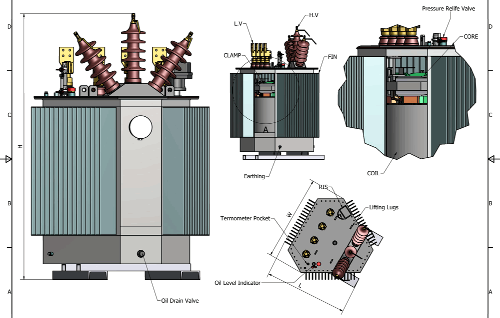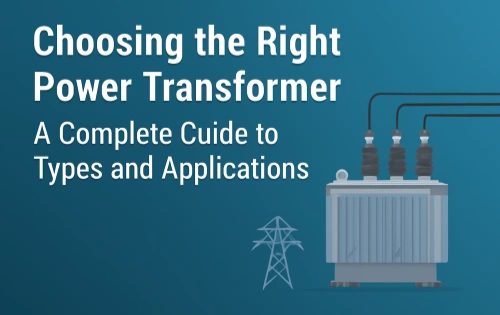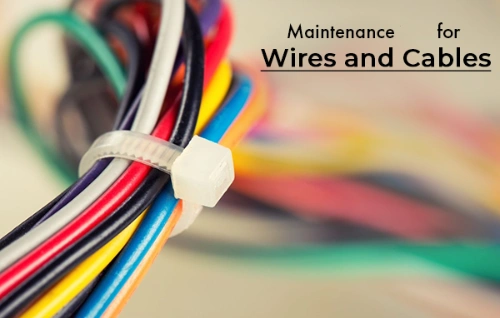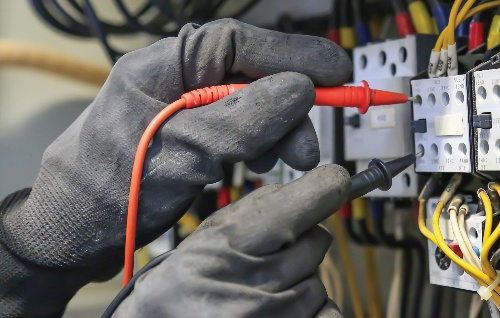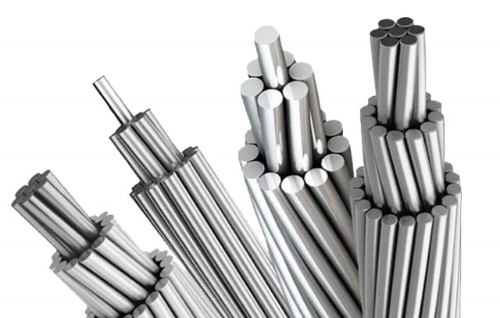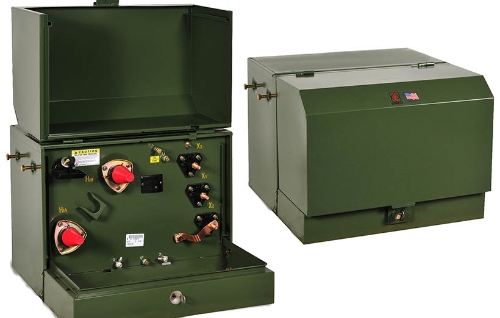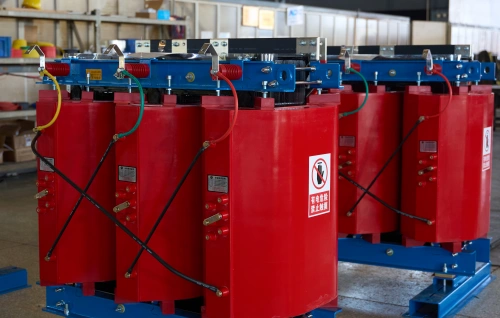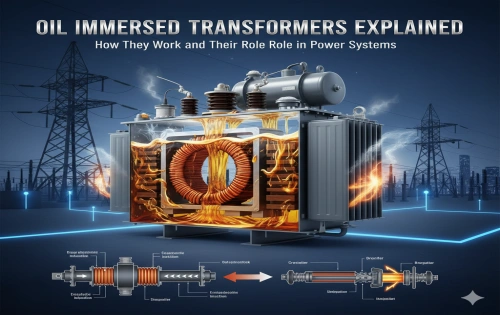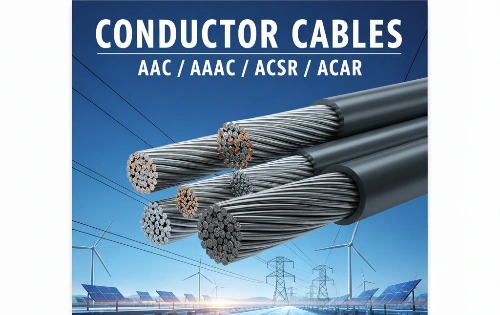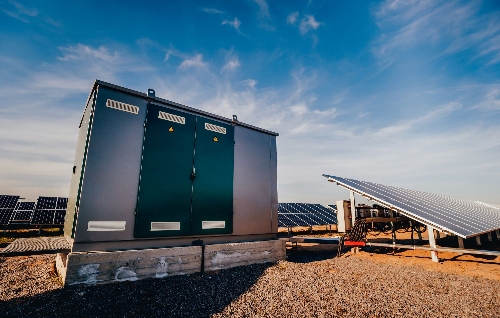What Is a Triplex Transformer? Definition, Working Principle, Advantages, and Applications
Transformers are the backbone of modern power distribution systems, allowing electrical energy to be transmitted efficiently over long distances and delivered at usable voltage levels. Among the different types of transformers, the triplex transformer plays a unique role in situations where installation and transportation are limited by space, weight, or access.
In this article, we will explore what a triplex transformer is, how it works, its advantages and disadvantages, typical applications, and how it compares to a conventional three-phase transformer.
What Is a Triplex Transformer? (Definition)
A triplex transformer is essentially a three-phase transformer constructed by combining three separate single-phase transformers into one system. Each unit operates independently but is interconnected through bus bars or cables to deliver three-phase power.
Unlike a conventional three-phase transformer that comes as a single integrated unit, the triplex transformer uses a modular design. This modularity makes it especially useful in environments where moving and installing one large transformer would be impossible, such as high-rise buildings, underground facilities, or retrofitted industrial plants.
In simple terms, the triplex transformer provides the same electrical function as a standard three-phase transformer but offers greater flexibility in transportation and installation.
Working Principle of a Triplex Transformer
The working principle of a triplex transformer is similar to that of any three-phase transformer, but the configuration is modular.
- Each of the three single-phase transformers has its own core, primary winding, and secondary winding.
- When interconnected, they form a complete three-phase system.
- The most common connection types include Delta–Wye (Δ–Y) and Wye–Delta (Y–Δ), depending on system requirements.
Handling Zero-Sequence Flux
One technical advantage of the triplex design is its ability to minimize problems associated with zero-sequence flux. In some transformer configurations (for example, Y–Y connected transformers), zero-sequence flux can induce eddy currents in the transformer tank, leading to unwanted tank heating. A triplex configuration helps mitigate this problem, improving efficiency and longevity.
Advantages of Triplex Transformers
The triplex transformer offers several benefits that make it attractive in specialized applications:
-
Ease of Transportation and Installation
- Each unit is smaller and lighter than one large three-phase transformer.
- Perfect for locations with narrow corridors, small freight elevators, or weight restrictions.
-
Flexibility in Design
- It can be customized and connected according to specific system requirements.
- Easier to replace or upgrade a single unit without disturbing the entire system.
-
Reduced Tank Heating Issues
- Less vulnerable to eddy current losses caused by zero-sequence flux.
-
Improved Reliability in Motor-Driven Systems
- Often used where electric motors start and stop frequently, such as in industrial facilities.
Limitations of Triplex Transformers
Despite their advantages, triplex transformers also come with some drawbacks:
- Larger Footprint: When installed, three separate units may occupy more floor space compared to one integrated transformer.
- Capacity Limitations: Each single-phase unit has a maximum rating, which may restrict the total system capacity.
- Additional Connections: More bus bars and cables mean more potential points of failure if not installed properly.
Applications of Triplex Transformers
Triplex transformers are used in situations where their modular benefits outweigh the disadvantages. Typical applications include:
- High-Rise Buildings: Transporting one large transformer to upper floors is often impossible, but three smaller units can be moved by elevator or through narrow access routes.
- Underground or Basement Installations: Space-constrained facilities benefit from the modular design.
- Industrial Facilities with Heavy Motor Loads: Frequent starting and stopping of motors can stress traditional transformers, making triplex designs more reliable.
- Retrofit or Replacement Projects: When upgrading electrical infrastructure in old buildings, a triplex system can be easier to install than a single bulky transformer.
Triplex Transformer vs. Conventional Three-Phase Transformer
To better understand the value of triplex transformers, it helps to compare them with conventional three-phase units:
|
Feature |
Triplex Transformer |
Conventional 3-Phase Transformer |
|
Design |
Three modular single-phase units |
One integrated unit |
|
Transport & Installation |
Easier, flexible, ideal for tight spaces |
Requires larger access points, cranes, or heavy transport |
|
Space Requirement |
Larger footprint overall |
More compact footprint |
|
Maintenance |
Can replace one unit at a time |
Entire transformer must be taken offline |
|
Tank Heating Issues |
Reduced |
More likely in some configurations |
|
Cost |
Often higher due to modularity |
Typically lower for the same rating |
🔹 FAQ Section (SEO Friendly)
1. What is the difference between a triplex transformer and a three-phase transformer?
A triplex transformer is built from three single-phase transformers interconnected to form a three-phase system, while a conventional three-phase transformer is one integrated unit. The triplex design is modular, easier to transport, and better suited for space-constrained installations.
2. Why are triplex transformers used in high-rise buildings?
Because they are modular, each unit can be transported separately using elevators or narrow hallways, making installation much easier compared to a single bulky three-phase transformer.
3. What are the advantages of a triplex transformer?
The main advantages include ease of transportation and installation, reduced tank heating problems, modular replacement of units, and better reliability in systems with frequent motor loads.
4. What are the disadvantages of a triplex transformer?
Triplex transformers typically require more floor space, may have capacity limitations, and involve additional connections that need careful installation to avoid reliability issues.
5. Where are triplex transformers commonly used?
They are widely used in high-rise buildings, underground facilities, industrial plants with heavy motor loads, and retrofit projects where transporting large equipment is not feasible.
A triplex transformer is a practical and innovative solution in the world of electrical power distribution. By combining three single-phase transformers into one modular system, it provides the same functionality as a conventional three-phase transformer but with added flexibility in transportation, installation, and maintenance.
While it may not always be the most space-efficient or cost-effective option, the triplex transformer shines in applications such as high-rise buildings, underground substations, industrial motor systems, and retrofit projects.

